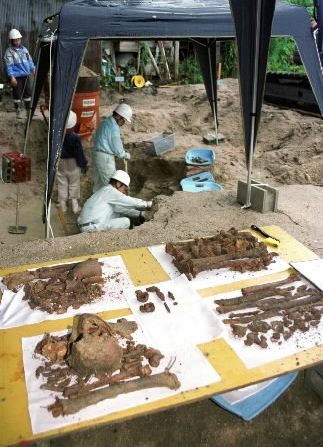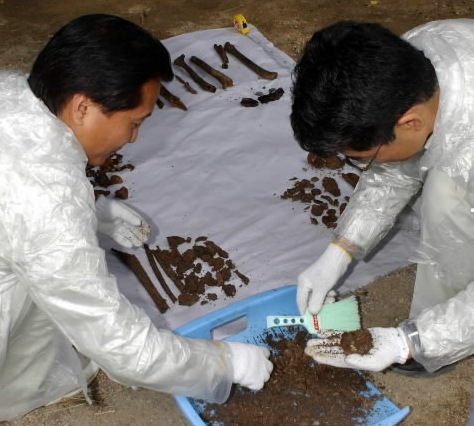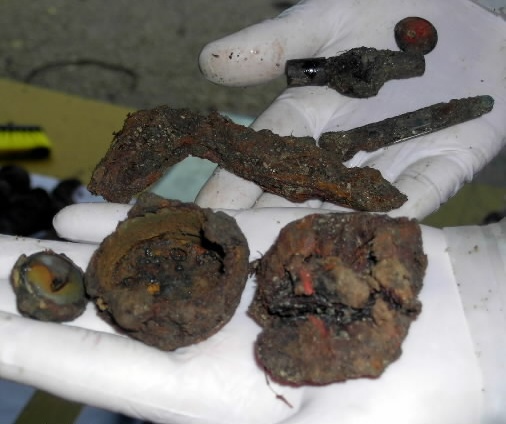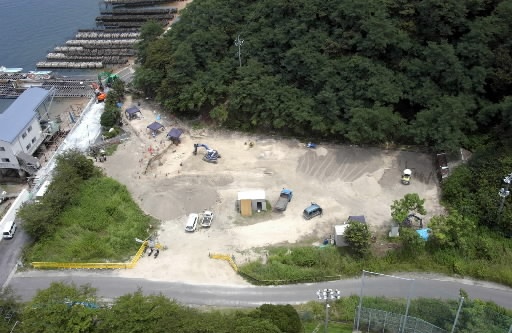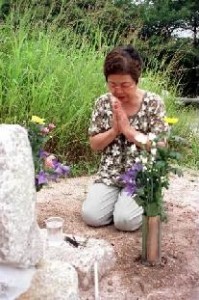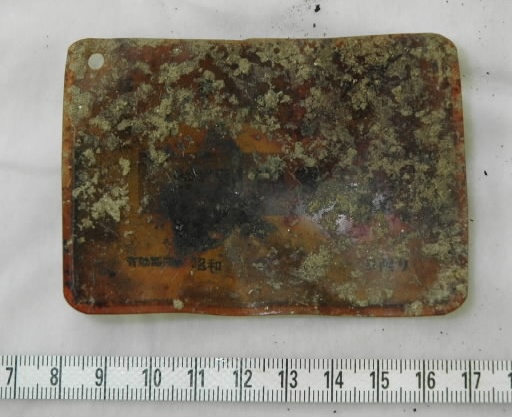Ninoshima Island, Awakening from Slumber, Part 6
Jun. 28, 2010
Remains and personal items await their return home
by Kunihiko Sakurai and Aya Kano, Staff Writers
Fifty-nine years after the dropping of the atomic bomb [this series was originally published in July 2004], the remains of many atomic bomb victims are being found on Ninoshima, a small island off the coast of Hiroshima. The fact that they are just now being exhumed reveals the vast scope of the devastation wrought by the bombing. The brittle, dark brown bones are reminders of the long years that have elapsed, forgotten by the public. In this series the Chugoku Shimbun examines how we should remember the atomic bombing experience and how we should convey that experience to the next generation.
The site on Ninoshima where the City of Hiroshima is exhuming the remains of victims of the atomic bombing is shrouded in solemnity. Several of the island residents participating in the excavation on Ninoshima, south of Hiroshima, have said that the soil gives off a particular smell on the days when remains are unearthed. Perhaps it is because 59 years after the atomic bombing the earth is steeped in the sorrow of the victims.
Skulls, thigh bones and shattered bone fragments have been unearthed. All of the nearly 20 workers involved in the project are residents of the island. They brush away the soil and carefully remove the bones. Working under the hot sun, they are drenched in sweat. Along with the city employees who are observing the work, they lay each set of bones out and then place them in coffins.
Personal items such as buckles, buttons and wristwatches have also been found among the remains. They write the name of the items on the white cloth in which are wrapped the remains that were nearest to where the items were found in the hope that it will lead to their identification.
Yoshikatsu Sumida, 52, is president of the local construction company that has been hired by the city to oversee the excavation. He erected a stone monument on the site.
On July 7, Tsukiko Sato, 64, a resident of Higashi Hiroshima, placed an offering of water at the monument. Ms. Sato's mother, Mune Ueno, lived about 700 meters from the hypocenter of the bombing. She is believed to have died three days after the bombing while being transported to Ninoshima. She was 28. "We didn't get her remains back," Ms. Sato said. "But I feel a little better now that I've been able to visit the island and pray."
Ninoshima lies about 4 km from Hiroshima's port of Ujina. Since the excavation began in late May, the remains of an estimated 62 victims have been exhumed. The excavation will continue through the end of this month. After work is completed, the remains will cross the sea for the first time in 59 years to be interred in the Atomic Bomb Memorial Mound in Peace Memorial Park.
(Originally published July 20, 2004)

